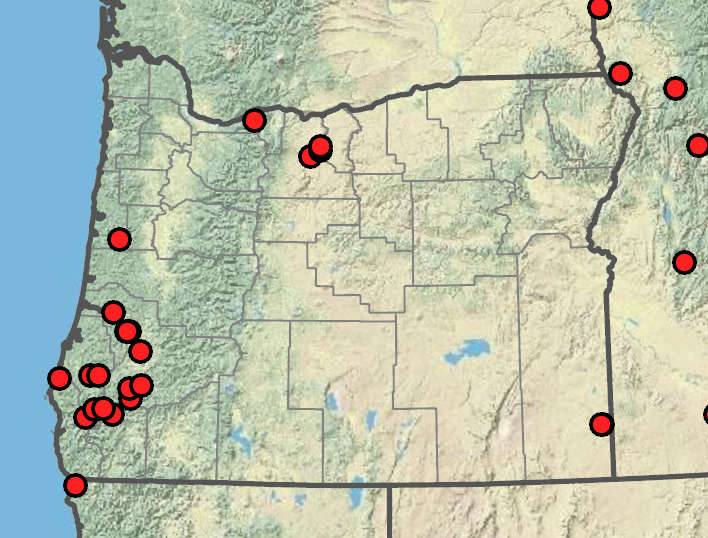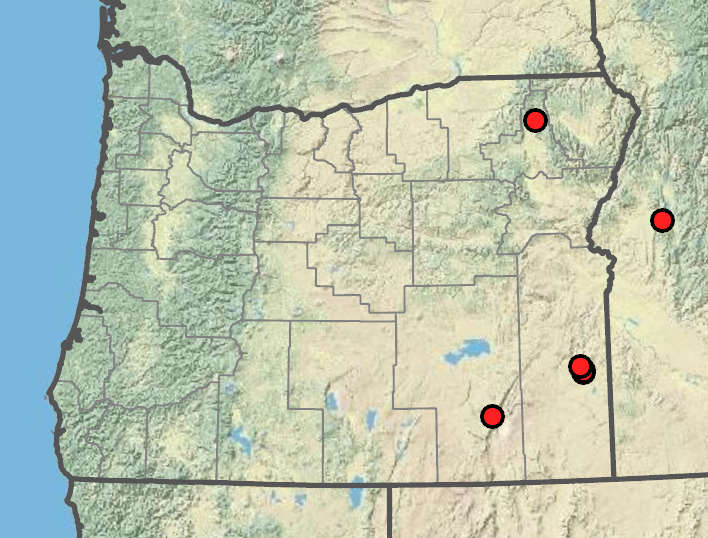Muhlenbergia mexicana
(synonym of Muhlenbergia glomerata)
Muhlenbergia minutissima
wirestem muhly
annual muhly
0.5–2 mm thick; much branched above the base, not nodulose;
internodes dull, puberulent or glabrous for most of their length, sometimes strigose immediately below the nodes.
slender;
internodes mostly glabrous, minutely scabrous or smooth, minutely scabrous or with tiny, appressed hairs below the nodes.
blades 2–20 cm × 2–6 mm; flat, scabrous or smooth, those of the secondary branches similar in length and width to those of the main branches.
blades 0.5–4(10)cm × 0.8–2 mm; flat or involute;
lower surface scabrous;
upper surface shortly pubescent.
terminal and axillary, 2–21 × 0.3–3 cm; dense, appressed or diverging up to 30° from the inflorescence axis;
primary branches 0.3–5.5 cm × over 0.1 mm.
5–16(21) × 1.5–6.5 cm; open;
primary branches 8–42 × 0.05–0.1 mm, often capillary, diverging 25–80° from the inflorescence axes;
pedicels 2–7 mm; straight or curved but rarely curved as much as 90°.
1.5–3.8 mm, often purple-tinged.
0.8–1.5 mm.
subequal, 1.5–3.7 mm, approximately as long as or slightly shorter than the lemmas, 1-veined, tapering from the bases to the acuminate tips; awnless or awned; awns; if present; to 2 mm.
with sparse; tiny, appressed hairs at least near the tips, 1-veined;
lower glumes 0.5–0.8 mm, obtuse to acute;
upper glumes 0.6– 0.9 mm; broader than the lower glumes, obtuse.
1.5–3.8 mm, lanceolate, pubescent on calluses and lower portion of the midveins and margins;
hairs shorter than the florets; less than 1.5 mm long;
tips minutely scabrous, acuminate; awnless or awned;
lemma awns 0–10 mm.
0.8– 1.5 mm, lanceolate; brownish to purplish, glabrous or the midveins and margins appressed-pubescent;
tips obtuse to subacute; awnless.
0.3–0.5 mm; yellowish to purplish.
0.2–0.7 mm; purplish.
=40.
=60, 80.
Muhlenbergia mexicana
Muhlenbergia minutissima
Throughout North America. 2 varieties.
Muhlenbergia mexicana flowers relatively late in summer after river levels drop. It is seldom collected. The similar M. andina has lemma hairs about as long as the lemma body.
Shores of lakes, ponds, reservoirs and streams, in sandy or gravelly soil. 1100–1500m. Owy. CA, ID, NV, WA; northeast to MT, east to SD, southeast to TX, south to Mexico. Native.
This rare, tufted annual has a diffuse but narrow panicle. It is known from one Oregon location near Jordan Craters in Malheur County. Similar M. asperifolia is a rhizomatous perennial with a more open panicle.
Barbara Wilson, Richard Brainerd, Nick Otting
Barbara Wilson, Richard Brainerd, Nick Otting
- Local floras:
BC,
OR,
WA
- Local Web sites:
Flora NW,
PNW Herbaria
WildflowerSearch
iNaturalist (observations)
USDA Plants Database
- LBJ Wildflower Center
- SEINet
- Plants of the World Online
- Encyclopedia of Life
- Wikipedia
- Google Image Search
- Local floras:
CA,
OR,
WA
- Local Web sites:
CalFlora,
CalPhotos,
Flora NW,
PNW Herbaria
WildflowerSearch
iNaturalist (observations)
USDA Plants Database
- LBJ Wildflower Center
- SEINet
- Plants of the World Online
- Encyclopedia of Life
- Wikipedia
- Google Image Search



